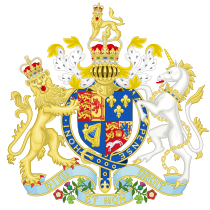The Ordinance of Labourers (23 Edw. 3) is generally considered to be the start of English labour law.[1] Issued as a royal proclamation in June 1349 by the council of King Edward III,[a]Parliament did not reconvene after the Black Death until 1351.[2] it was prompted by their concern about the lack of labourers to gather the upcoming harvest.[3] But the ordinance proved to be largely ineffective in addressing the acute shortage of labour in the wake of the Black Death of 1348–1349, which had resulted in the deaths of an estimated 40−60 per cent of the population of England.[2][b]Estimates vary from about 20 per cent up to more than 60 per cent. A 2016 paper by the archaeologist Carenza Lewis suggests that, in rural settlements in eastern England, the population declined by 45 per cent to 65 per cent.[4]
The legislation addressed three main areas: service, labour and prices.[3] It required that:[2]
- Every man or woman under 60, “without land or a craft sufficient for self-support” must serve whoever required his or her labour
- A lord had a preferential claim to the labour of his tenants, but he should not retain more labourers than necessary
- The wages of servants, labourers and artisans must not be higher than pre-plague levels
- Food must be reasonably priced, with no excess profit.
Enforcement of the ordinance was problematic, as it failed to make clear which bodies were responsible for indictment and prosecution, and did not lay out specific rates of wages or prices.[2] Parliament attempted to address those shortcomings with the Statute of Labourers of 1351, but workers nevertheless continued to command higher wages, radically altering the social structure of English society.[5]
Notes
| a | Parliament did not reconvene after the Black Death until 1351.[2] |
|---|---|
| b | Estimates vary from about 20 per cent up to more than 60 per cent. A 2016 paper by the archaeologist Carenza Lewis suggests that, in rural settlements in eastern England, the population declined by 45 per cent to 65 per cent.[4] |

